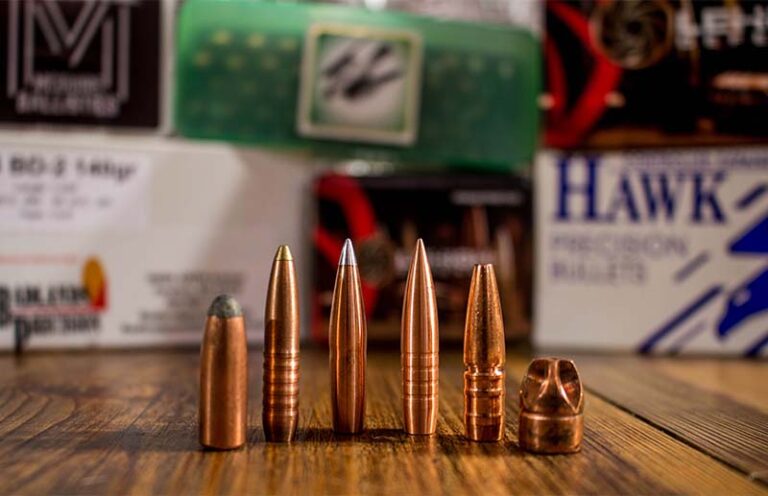
The prestige of premium projectiles from lesser-known companies like Lehigh Defense and Badlands Precision.
It was raining that early December afternoon—not enough to warrant staying indoors, but enough to make things uncomfortable. Deer sign was minimal in the Hudson Valley, to say the least, as the EHD breakout of the previous few years had taken a toll. In fact, in my little secret spots where I would have guaranteed the sighting of at least a doe or two, there was nothing. Still, I had a tag in pocket … and I wasn’t giving up.
At 4:15 pm he broke cover, stepping into the old orchard, apparently smelling the evidence of a doe I hadn’t seen. My thumb disengaged the safety, and as soon as the crosshair was tucked in behind the buck’s shoulder, I broke the trigger. The 6.8 Western barked, and a 140-grain Badlands Precision bullet had me notching my tag—with an irremovable smile on my face.
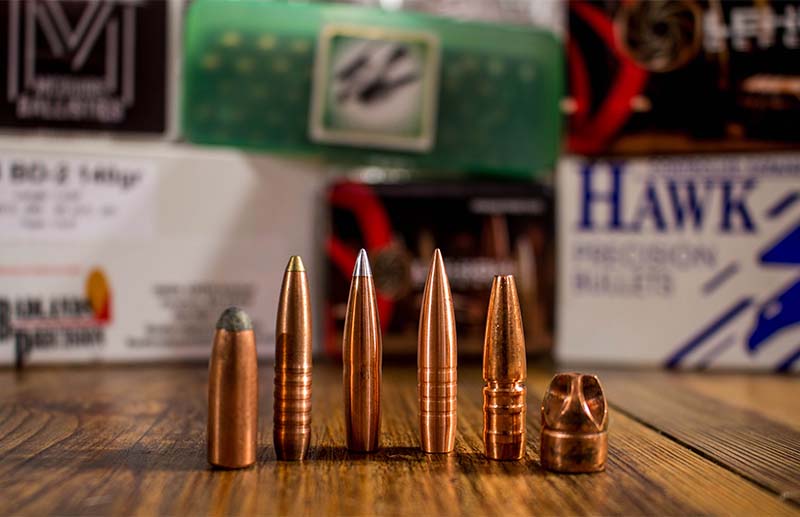
I have an undeniable infatuation with projectiles, to the point of obsession. Long ago, I came to the realization that the bullet (and only the bullet) touches the game animal, target or steel plate. The choice of bullet—and the ability to modify the performance of that bullet—is what drew me to reloading, and experimentation with different projectiles has garnered me with a ton of experience over the years.
While I use, enjoy and love classic projectiles, such as Federal’s Trophy Bonded Bear Claw, Nosler Partition, Sierra GameKing, Hornady Interlock and Remington Core-Lokt, I absolutely love experimenting with products from smaller companies.
Peregrine Bullets
Hailing from South Africa, Peregrine Bullets makes a series of lead-free copper monometal projectiles that work perfectly on all game animals. The VRG-2 PlainsMaster and VRG-3 BushMaster softpoints are a unique concept, putting a brass expander plunger over a hollow cavity, relying on the air pocket underneath the meplat.
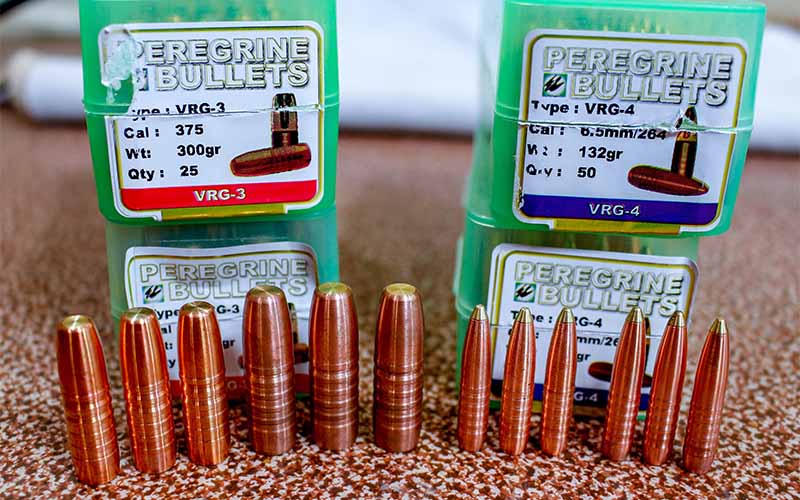
Air is difficult to compress, so upon impact, the brass tip is driven rearward, compressing the air and driving the sidewalls out in a radial fashion. The PlainsMaster is a spitzer boat-tail design, while the BushMaster has a flat meplat, yet retains the boat-tail. I’ve used a good number of these on game animals ranging from whitetail deer to Cape buffalo and have found them to be one of the finest designs available. They offer the correlative solid brass and solid copper non-expanding bullets for the thick-skinned dangerous game, as well as a line of match target bullets: the RangeMaster.
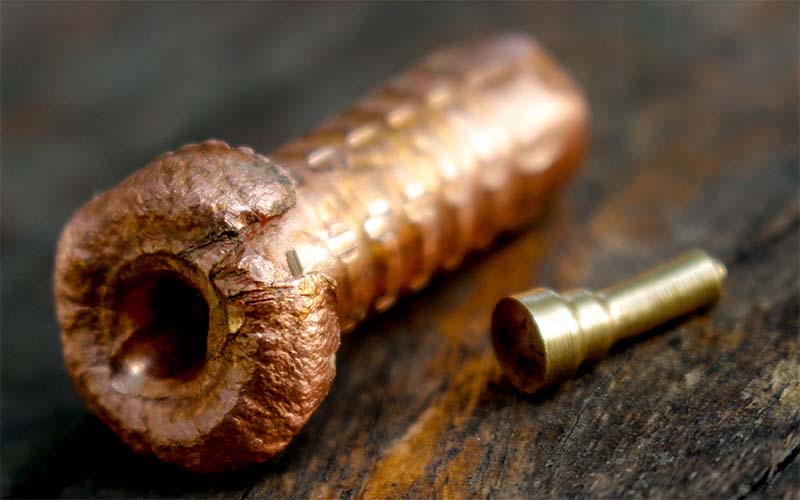
Peregrine bullets are made on CNC Swiss lathes, to diameter tolerances of 0.0002 inch and will hold weight tolerances on 0.2 grain. Retained weight is usually in the mid 90 percent range—as you’ll lose the brass insert—and expansion is most often twice the caliber. These bullets are the brainchild of Adriaan Rall and the late Louis Nel, and are available in calibers from .223 inch to the big .500s. I’ve used the PlainsMaster in the 6.5-284 Norma with great results, and the BushMaster in .416 Rigby, .450-400 3-inch NE and .470 NE, having perfect field performance. (PeregrineMonolithics.com)
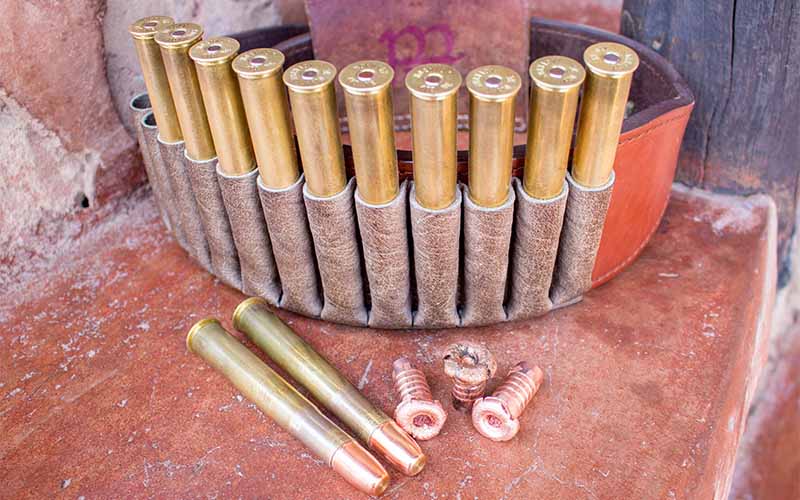
Badlands Precision
George Fournier’s Badlands Precision bullets company calls South Dakota home, and he has some great monometal designs. A sleek ogive, an aluminum tip with near-seamless transition to the copper body, and a pronounced boat-tail all add up to a bullet that has the highest ballistic coefficient (BC) values among the lead-free projectiles.
My Browning X-Bolt in 6.8 Western mated up perfectly with their 140-grain Super Bulldozer-2, with a G1 BC of .650 and measuring 1.56 inches long, and the 1:7½ twist rate stabilized the long bullet without issue. Three of those Super Bulldozer-2s will cluster into a ½-MOA group, moving at 3,150 fps, and they’re perfect for deer and similar-sized game animals.

I loaded up some of George’s Bulldozer-2 (not the “Super” variant) in the 7mm PRC and .300 H&H Magnum at 140 grains and 195 grains, respectively, and was more than pleased with the results on paper, with the 7mm PRC printing 5/8-inch groups at 100 yards, and the .300 Holland running right around ¾-inch at the same range. The 7mm bullet has a G1 BC of .560, and the .30-caliber a G1 BC of .675, so either will make a sound choice for hunting at sane ranges.
I got Fournier on the phone to ask him a couple questions about his hunting bullets, and he had this to offer:
PM: George, in a market that has seen all sorts of great advances in bullet designs, and in which the major manufacturers are devoting serious time to development, what sets Badlands Precision apart?
GF: What sets Badlands bullets apart from major manufacturers is their lower drag/weight, which makes them hit harder farther, the consistency of expansion and their ability to penetrate very deeply, allowing for extreme quartering angles of impact. In several instances, we’ve seen complete pass-through shots through in animals as big as elk and moose, causing “dead right there” kills. They don’t fall apart after impact like many lead core bullets do and, for their weight, have significantly lower drag than other copper or lead bullets.
PM: Do you have a recommended velocity impact range for your bullets? How slow can they go and still reliably expand?
GF: Our tests show 1,680 fps for the BD2 line. The SBD2s have a longer and somewhat thinner ogive, and will expand in the 1,650-fps range. To keep it simple, we just say 1,700 fps. That, along with the high BC for weight, allows most of these bullets to be effective at about 900 to 1,200 yards when shot at a muzzle velocity of 3,000 fps, depending on altitude. That effective range is well beyond other copper bullets.
I’d take these bullets on any hunt within my hunting range. The weight tolerances were within 0.1 grains for the lot, and they didn’t seem particularly sensitive to seating depth. All three of my rifles were very happy to send these into tight groups.
The Bulldozer-2 and Super Bulldozer-2 line include bullets in .224-inch caliber, up to and including .375-inch caliber. In addition to the Bulldozer-2 and Super Bulldozer-2, Badlands offers the ICBM-2 target bullet, in heavy-for-caliber configuration with very high BC values for the long-range target crowd. (BadlandsPrecision.com)
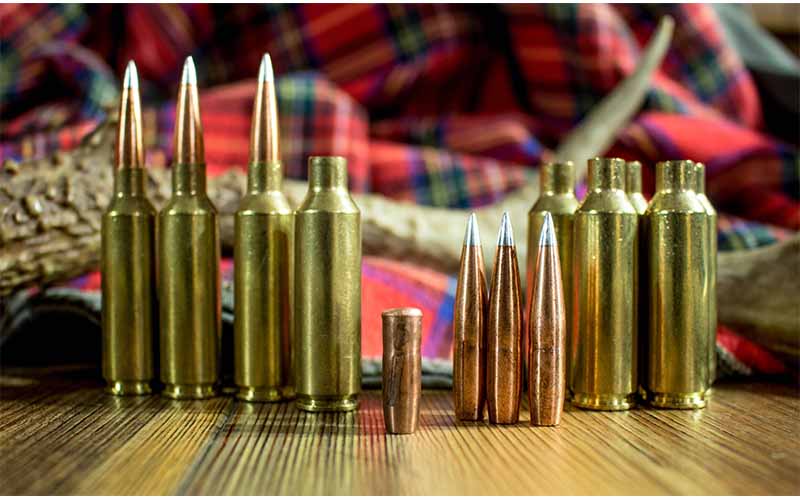
Lehigh Defense
This Arkansas company is part of Bill Wilson’s excellent lineup of shooting-related manufacturers, and much like his firearms, their bullets do not disappoint. There are a number of choices, all-lead-free, including match/target solids and wide, flat-nose solids for penetrating thick hide and tough bone—but there are a pair of very interesting choices that might appeal to the curious.
The Lehigh Defense Controlled Chaos rifle bullets are a hollow-point boat-tail monometal design, with a deep hollow point and numerous grooves cut into the shank, with one especially deep groove just before the transition from shank to ogive. The design of the Controlled Chaos is such that if the bullet strikes a fluid-rich medium (flesh), the hollow point will fracture into multiple petals that’ll radiate outward from the point of impact, while the base will continue on for straight-line penetration. Lehigh Defense states that the Controlled Chaos bullet won’t expand or fragment if it hits a hard barrier, such as drywall, but only in a fluid environment.
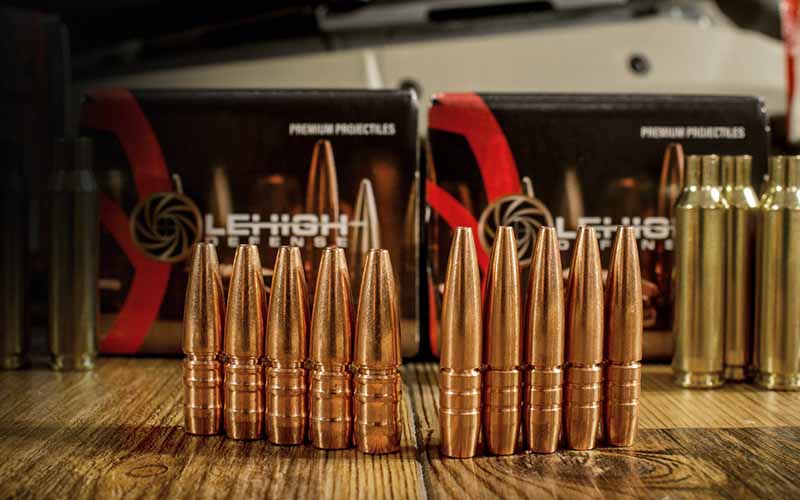
I loaded the 152-grain .308-inch bullet in my Ruger M77 .308 Winchester, and the 130-grain .264-inch bullet in my 6.5 Creedmoor, and I had little difficulty getting either to give MOA accuracy.
Lehigh Defense Xtreme Defense bullets feature a unique meplat, reminiscent of a blunt Phillips head bit. Again, we’re looking at a lead-free copper monolithic bullet, but it’s the performance at the nose that separates this design from the common hollow-point. Lehigh Defense refers to this design as a “Fluid Transfer Monolithic,” as the fluted nose delivers a unique type of performance in the terminal phase. Perhaps the folks at Lehigh Defense can best describe the performance:
The nose design is the key. The Fluid Transfer’s radial flutes force the hydraulic energy inward, and then as the energy is restricted, it accelerates outward—creating high-pressure spikes severely damaging surrounding tissue. This very rapid increase in fluid flow creates cavitation and massive tissue damage away from the projectile, equivalent to those of the best hollow-points on the market. The result of the Xtreme Defense is a permanent wound cavity that is two to four times greater than what a flat or round-nose bullet generates, and often larger than traditional or solid copper expanding bullets. What you get is a self-defense bullet that will shoot through barriers without deformation or trajectory change, and creates a larger permanent wound cavity, coupled with the desired 18 inches of penetration. This very rapid increase in fluid flow oftentimes creates cavitation and massive tissue damage at distances away from the projectile equivalent to the largest of hollow-points on the market.
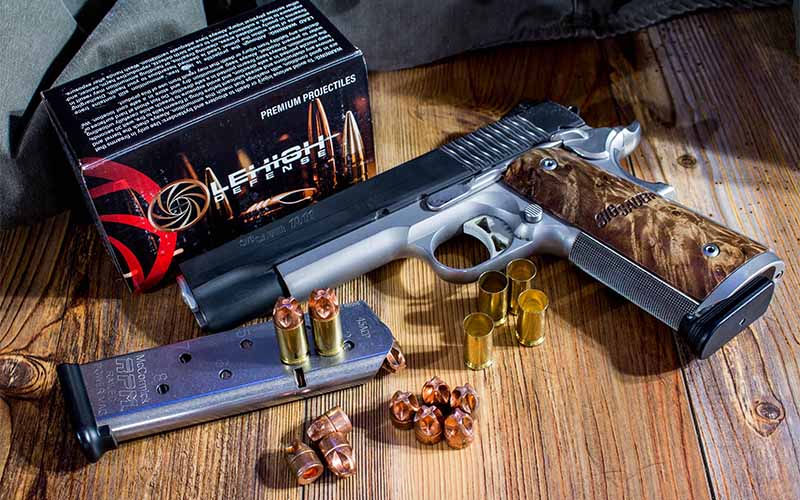
I loaded the 135-grain .451-inch-diameter Xtreme Defense bullets for my Sig Sauer STX 1911, seating them over a charge of 8.2 grains of Unique powder, and observed 1,085 fps with great groups and no feeding issues. The Xtreme Defense bullets are available in varying bullet weights (generally light-for-caliber) in .311-, .312-, .355-, .357-, .400-, .410-, .429-, .451-, .452-, .458- and .500-inch diameters, offering projectiles for the vast majority of common autoloading and revolver cartridges. (LehighDefense.com)
McGuire Ballistics
Hailing from California—where the lead-free movement has the strongest roots—McGuire Ballistics has strived to take the copper projectile to a new level. Their Copper Rose projectiles are highly uniform in both weight and length, and they have the potential to be an all-around choice for the hunter, regardless of which state or province you live or hunt in.
There are two variants of the McGuire projectiles: Magazine Feed and Single Feed. The former has a tougher meplat and can handle the repeated recoil impact that cartridges in a magazine are often subject to, and the latter has a much softer tip, so it’ll need to be fed singly. The exterior dimensions of the two models—if of the same caliber and weight—are identical, and I found that they print to the same point-of-impact. McGuire gives an approximate BC—which is wise, as it can and will change with velocity—for each of their projectiles, which are all of the spitzer boat-tail design.
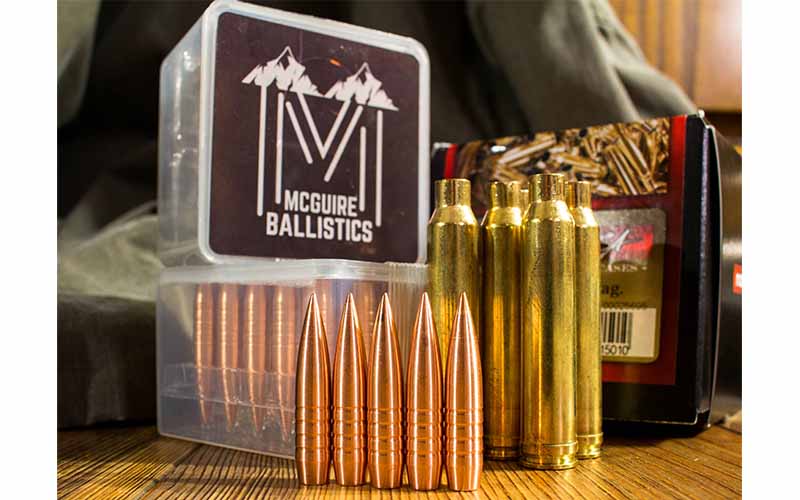
McGuire offers their bullets in the most common, all-around calibers: 125-grain 6.5mm, 128-grain .277 inch, 143- and 160-grain 7mm, and 168- and 178-grain in .308-inch diameter. This should cover the majority of your hunting needs, and the construction and conformation of the Copper Rose projectiles will handle the high-impact velocities of magnum cartridges at short distances, yet will expand reliably at hunting ranges this side of the next zip code.
I loaded the 143-grain, 7mm bullet in the 7mm-08 Remington, and my little Tikka T3X Lite seemed particularly pleased with them, delivering three-shot groups averaging ¾-MOA. The 178-grain .30-caliber was destined for my well-worn .300 Winchester Magnum, and once I seated that bullet over a suitable charge of Reloder 19, sparked by a Federal Gold Medal Match GM215M large rifle magnum primer, three of the McGuire projectiles would land in a group just over ½-MOA. (McGuireBallistics.com)
Hawk Bullets
Though the market is decidedly making a hard shift to lead-free projectiles, lead-core bullets work even better every day due to continuous improvements in bullet construction. New Jersey’s Hawk Bullets embraces the lead-core/copper jacket concept, using a proprietary process designed to deliver the same results as bonding to keep their two components together during the terminal phase.
While the majority of Hawk bullets are of a round-nose, flat-base configuration, the beauty of the company is that you can choose from a good number of bullet designs, with varying jacket thicknesses or bullet weights … though not boat-tails.
For example, you may opt for a bullet with a jacket of 0.030-inch thickness for deer and similar-sized game, or beef it up to 0.035 inch for tougher game or to use in a magnum cartridge. Hawk will make a jacket as thin as 0.025 inch, or as thick as 0.065 inch, for the thickest-skinned game.

And Hawk is a fantastic source of projectiles for the obscure cartridges, offering bullets in .333-inch diameter for the .333 Jeffery, in .286-inch diameter for the .280 Ross, and .318-inch diameter for the 8x57mm with the “J” bore. I rely on Hawk for the 200-grain round-nose .330-inch diameter bullets for my .318 Westley Richards; these bullets are perfectly suited to black bear and whitetail deer here at home in New York. Should I need a source for the heavy 250-grain bullets with which the .318 WR earned its reputation, Hawk makes those as a custom order.
The folks at Hawk are certainly familiar with the gamut of older cartridges, from those classics associated with the golden age of safari, to the blackpowder cartridges that helped settle the West, to those smokeless designs of the early 20th century that have just faded into history. Hawk is a reliable source for those who—like me—enjoy hunting with a cartridge that’s just a bit different, as well as being a great source of a common-sense bullet for the .308 Winchester and .30-06 Springfield, or revolver. (HawkBullets.com)
Parting Shot
If you enjoy loading your own ammunition and prefer to use something a little left of center, there are many great choices out there, whether you prefer the latest monometal tech or a traditional cup-and-core round-nose. While the major manufacturers are making the best stuff they ever have, I fully support these smaller companies who are putting their efforts forth to bring out the best products they can.
Editor's Note: This article originally appeared in the May 2023 issue of Gun Digest the Magazine.
Raise Your Ammo IQ:
- Beyond The 6.5 Creedmoor: The Other 6.5 Cartridges
- Ammo Brief: The Versatile .243 Winchester
- The Lonesome Story Of The Long-Lost 8mm
- Why The .300 H&H Magnum Still Endures
- .350 Legend Vs .450 Bushmaster: Does One Win Out For Hunting?

Next Step: Get your FREE Printable Target Pack
Enhance your shooting precision with our 62 MOA Targets, perfect for rifles and handguns. Crafted in collaboration with Storm Tactical for accuracy and versatility.
Subscribe to the Gun Digest email newsletter and get your downloadable target pack sent straight to your inbox. Stay updated with the latest firearms info in the industry.

![Best Concealed Carry Guns In 2025 [Field Tested] Wilson Combat EDC X9S 1](https://gundigest.com/wp-content/uploads/Wilson-Combat-EDC-X9S-1-324x160.jpg)


![Best 9mm Carbine: Affordable PCCs [Tested] Ruger Carbine Shooting](https://gundigest.com/wp-content/uploads/Ruger-Carbine-Shooting-100x70.jpg)
![Best AR-15: Top Options Available Today [Field Tested] Harrington and Richardson PSA XM177E2 feature](https://gundigest.com/wp-content/uploads/Harrington-and-Richardson-PSA-XM177E2-feature-100x70.jpg)
